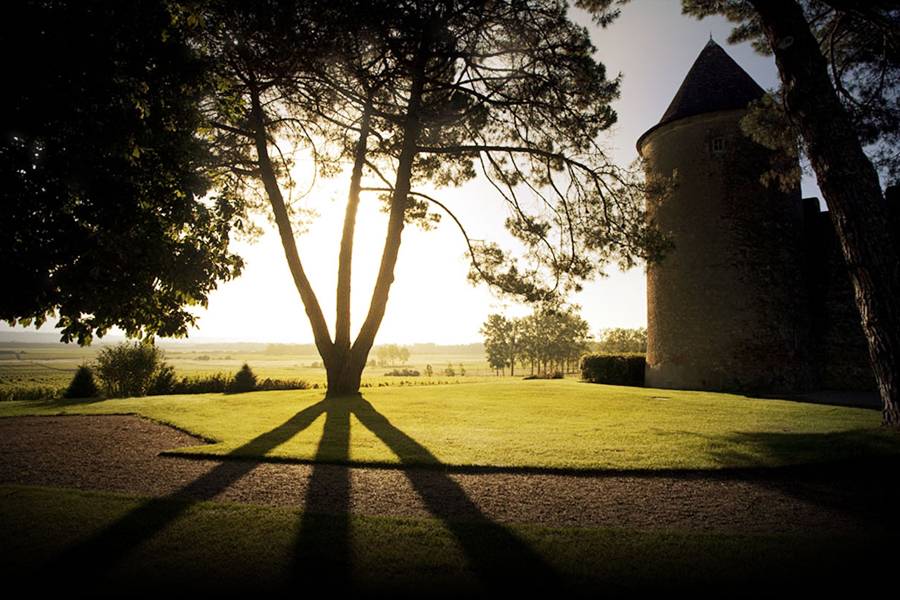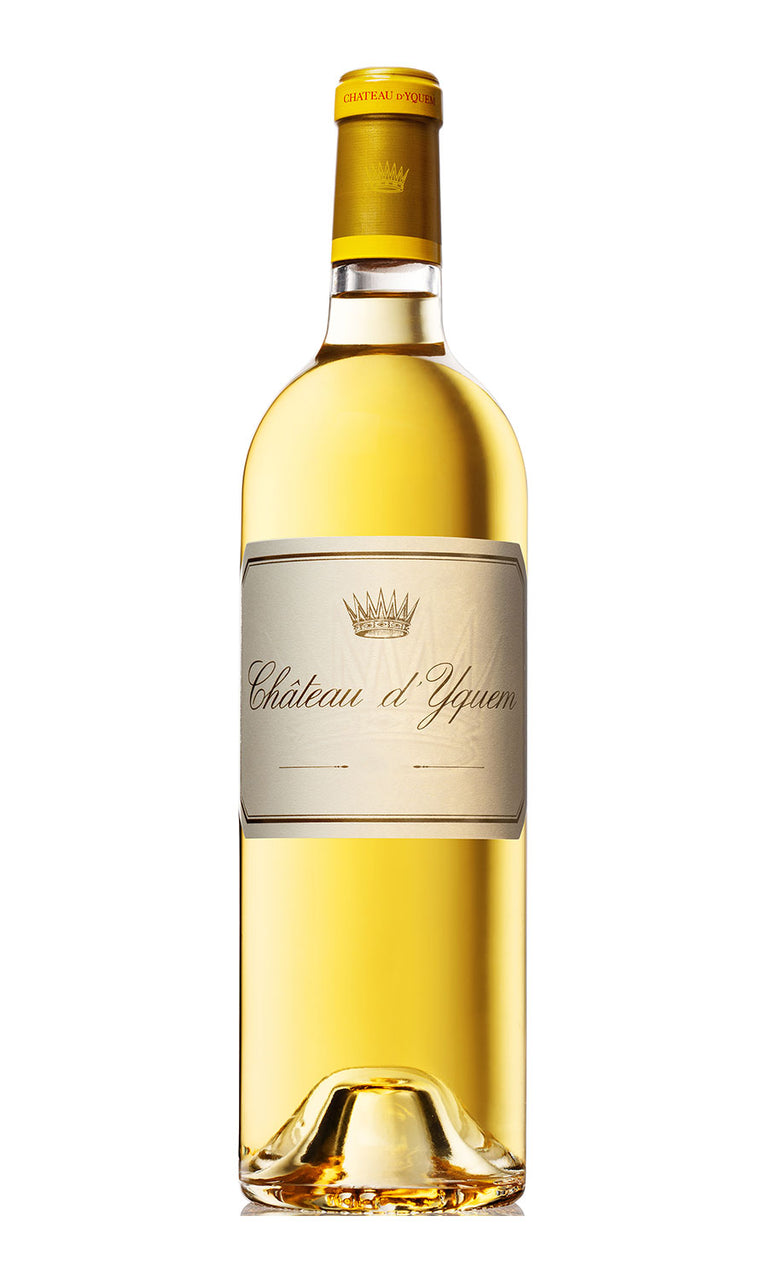- Colour Port_Sweet
- Producer Château d'Yquem
- Region Sauternes
- Drinking 2018 - 2089
- Case size 3x37.5cl
- Available Now
2014 - Ch d'Yquem 1er cru Classé Supérieur Sauternes - 3x37.5cl
- Colour Port Sweet
- Producer Château d'Yquem
- Region Sauternes
- Drinking 2018 - 2089
- Case size 3x37.5cl
- Available Now
Select pricing type
Need help? Call +44 (0)20 7793 7900 or email wine@goedhuiswaddesdon.com.
-
Goedhuis, April 2015, Score: 95-97
Bright golden yellow colour, this has a wonderful array of tropical fruits; mango, peaches and acacia honey. A wine which jumps out of the glass at you. It is so opulent and giving, balancing natural sweetness with a delicious drive of freshness.
-
Neal Martin, April 2015, Score: 96-98
The Château Yquem 2014 was picked over 9 weeks this year, with one-quarter of the grapes picked prior to 15 September. It delivers 134 grams per liter residual sugar and 7.3 grams per liter tartaric acid, with a pH 3.60. It has a captivating bouquet (I know...I know...what else were you expecting) But it entrances with its pure, wild honey notes mixed with almond and white chocolate scents, bestowed with beguiling delineation and focus. The palate is very poised with the acidity nigh on perfect. Occasionally an Yquem only reveals its components parts at this early juncture, necessitates conjecture. However the 2014 has a sense of harmony and completeness already, as if the élevage is merely there to usher it on to its finished state. There is undeniably great depth here, perhaps less conspicuous than other vintages because of that silver thread of acidity: notes of lemon sherbet, orange zest, shaved ginger and again, a few "flakes' of white chocolate. It is extremely long with tenderness rather than power on the finish. It's not quite up there in the rarefied heights of say, the 2001 or 2009, but it is what we call in the trade, "the business."
-
James Suckling, March 2015, Score: 97-98
A crazy combination of botrytis, dried fruits and freshness. It's not the sweetness Yquem but it has an extraordinary depth of fruit and freshness. It goes on for minutes. Spicy and intense. A stunning young wine. A brightness and fabulous depth of fruit.
-
Decanter, April 2015, Score: 97
Utterly great Yquem. A laser beam of acidity (3.6 pH) and lemony botrytis lifts and extends extremely pure aromas and sweet flavours (134 g/L of residual sugar) of tangerine, vanilla, pineapple and minerals. Less rich than the 2001 and '09, but purer and fresher. I wonder if 25% Sauvignon Blanc isn't just 5% too much? Drink: 2022-2075
-
Matthew Jukes, May 2015, Score: 19+
(75 Semillon, 25 Sauvignon Blanc) | 13.4% alc. | 134 g/L residual sugar. This wine parades an incredibly fresh nose of pineapple, lemon blossom and white flowers. The depth and richness builds immediately on the palate and is a shock after the quiet nose. It leaps into action and delivers a massively concentrated wave of sour lemon and lush, creamy fruit. The acidity is very refreshing and lively and the staggering sweetness is stopped in its tracks. Like the 2007 and 1997 this is a superbly invigorating and cleansing Yquem on account of the cooler summer and the tighter frame means that it will age well in spite of looking so ravishing already.
-
Jancis Robinson, April 2015, Score: 19
Everything was very early, although they are always a week earlier at Yquem. Harvest started on 8 October with grapes slightly dried as well as botrytised. These grapes gave great freshness. They picked up until 28 October thanks to at least three botrytis infections. 15% passerillé grapes. TA 4.9 g/l (= 7.5 g/l expressed as tartaric) – a record. RS 135 g/l. Bright gold with a green note. Intense freshness on the nose. Fabulous nose of richness and freshness. The residual sugar is not high but the balance is great. Lime and pears and great richness and almost like a fruit juice, it’s so refreshing yet dense and sweet. 13.35% Drink 2020-2050
-
Wine Spectator, March 2015, Score: 96-99
This is beguiling, with acacia, jasmine and honeysuckle notes leading the way, followed by refined peach, tangerine and yellow apple fruit flavors. Very long, with a lemon chiffon note lingering delicately. Tasted non-blind.
Producer
Château d'Yquem
Château d'Yquem sits on its own in more ways than one. It has its own rank at the top of the 1855 classification - Premier Cru Supérieur - and it lies near the peak at the centre of the Southern Sauternes appellation. Thomas Jefferson wrote that the best white wine in France was produced there (although it would have been quite a different wine to today's).Once belonging to Eleanor of Aquitaine, Château d'Yquem passed to t...Read more
Château d'Yquem sits on its own in more ways than one. It has its own rank at the top of the 1855 classification - Premier Cru Supérieur - and it lies near the peak at the centre of the Southern Sauternes appellation. Thomas Jefferson wrote that the best white wine in France was produced there (although it would have been quite a different wine to today's).Once belonging to Eleanor of Aquitaine, Château d'Yquem passed to the french crown upon her marriage to the future King Louis VII. After the marriage was annulled, Eleanor was free to marry Henry Plantagenet, who became King Henry II of England, in 1154. Château d'Yquem remained in British hands until the end of the Hundred Years War (1453).The Sauvage dYquem family acquired it in 1593 and maintained ownership until the 18th century, a time throughout which they modified and added to the Château and the reputation of the wine was sealed.Despite the family losing the estate after the revolution, they managed to wrest control of it once more, and Francoise-Josephine Sauvage d'Yquem again continued to build the estate. The estate passed through the Lur-Saluces family until it reached Bertrand de Lur-Saluces. Bertrand introduced the dry white wine "Y" (pronounced ygrec in french). In 1968 upon Bertrand's death, the estate passed to his nephew Alexandre Lur-Saluces who tended the estate until family politics saw the control of the estate land with LMVH and Pierre Lurton who manages Cheval Blanc (also a LMVH property) now looks after the estate. The vineyards are a total of 113ha in all, only about 100ha are actually in production, thus allowing the the replacement of elderly vines and some land to lie fallow. It is planted with 80% Semillion and 20% Sauvignon Blanc, due to the latter's increased productivity, the end result is a more even distribution in the bottle. Yields are about 9hl/ha compared to 20 to 30 hl/ha in other sauternes properties. The site it particulaly susceptible to botrytis, or Noble rot, which causes the grapes to shrivel whilst concentrating the sugars and introducing levels of complexity. Harvest is extremely labour intensive, with several "tries" picking the grapes in the correct condition. The wine is fermented in Oak with typically three years spent in the barrel. On average about 65,000 bottles are produced every year.Read less

Region
Sauternes
It is not an exaggeration to say that these are the greatest sweet wines in the world. They are the result of a serendipitous marriage of grape variety, location, annual weather conditions and human care and determination. The vineyards are located on the banks of the cool spring-fed Ciron river which, in autumn, flows into the warmer tidal Garonne and creates rolling evening mists which clothe the vines until the afternoon sun burns them off the following day. This cycle creates perfect conditions for the development of botrytis cinerea or noble rot, and the resulting grape juice is a super concentrated sweet, ambrosial nectar which makes the most heavenly and complex wines with extraordinary ability to age. In 1855 the wines were classified into first and second growths, with Ch d'Yquem rightly receivingits own super status of premier grand cru. Other stunning wines include Chx Sudiraut, Rieussec, Coutet and Climens. While seductively fragrant and sweet when young, if you can bear to wait, you will be amply rewarded with lusciously rich, exotically complex wine.




